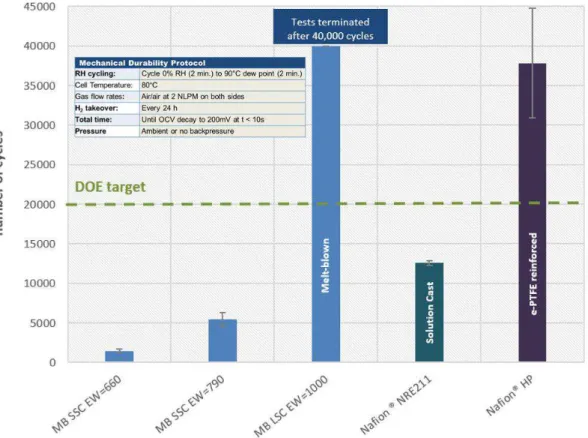Vous avez des questions? Nous pouvons vous aider. Pour communiquer directement avec un auteur, consultez la première page de la revue dans laquelle son article a été publié afin de trouver ses coordonnées. Si vous n’arrivez pas à les repérer, communiquez avec nous à PublicationsArchive-ArchivesPublications@nrc-cnrc.gc.ca.
Questions? Contact the NRC Publications Archive team at
PublicationsArchive-ArchivesPublications@nrc-cnrc.gc.ca. If you wish to email the authors directly, please see the first page of the publication for their contact information.
https://publications-cnrc.canada.ca/fra/droits
L’accès à ce site Web et l’utilisation de son contenu sont assujettis aux conditions présentées dans le site LISEZ CES CONDITIONS ATTENTIVEMENT AVANT D’UTILISER CE SITE WEB.
READ THESE TERMS AND CONDITIONS CAREFULLY BEFORE USING THIS WEBSITE.
https://nrc-publications.canada.ca/eng/copyright
NRC Publications Archive Record / Notice des Archives des publications du CNRC :
https://nrc-publications.canada.ca/eng/view/object/?id=884c9b06-f3e7-4ac7-86fb-c9e7c0899c86 https://publications-cnrc.canada.ca/fra/voir/objet/?id=884c9b06-f3e7-4ac7-86fb-c9e7c0899c86
NRC Publications Archive
Archives des publications du CNRC
Access and use of this website and the material on it are subject to the Terms and Conditions set forth at New manufacturing process for cost reduction and durability
improvement of proton exchange membrane fuel cells: scale-up and application for LSC and SSC PFSA ionomers and performance and durability assessment for low RH operation
Mokrini, Asmae; Chenitz, Régis; Vachon, François; Perrin-Sarazin, Florence; Jiang, Ruichun; Gittleman, Craig; Merlo, Luca; Oldani, Claudio
New Manufacturing Process for Cost Reduction and Durability Improvement of
Proton Exchange Membrane Fuel Cells. Scale-up and application for LSC and SSC
PFSA ionomers and performance and durability assessment for low RH
operation
aAsmae Mokrini, aRegis Chenitz, aFrançois Vachon, aFlorence Perrin-Sarazin, bRuichun
Jiang, bCraig Gittleman, bMerlo Luca, bClaudio Oldani
(a) Materials for Energy Technologies, National Research Council (b) Fuel Cell Materials and Analysis, General Motors
(c) Solvay Specialty Polymers
Abstract
Fuel cell electric vehicles (FCEV) are on the market today with a very limited production below 1000 FCEV/year. Cost, durability and the availability of hydrogen refueling infrastructure are still challenges to be overcome to enable a more extensive market penetration. The need for cost competitive technologies that meets the requirements for high volume commercial markets is still very relevant. In this presentation, process development and scale-up of a cost effective manufacturing process for polymer electrolytes fabrication, as well as the results obtained from performance and durability assessment will be discussed.
An innovative manufacturing approach to make proton exchange electrolyte materials, have been developed using a new process based on melt-blowing technology1. Melt-blowing is a
unique, one-step process in which a thermoplastic polymer is heated in an extruder and then extruded through a circular die. Air is blown into the center of the extruded tube and induces polymer expansion in the radial direction. Extension of the melt in both the radial and down-stream directions stops at the frost line due to crystallization of the melt. The nip rolls collecting the film, serve as sealing on the top of the bubble to maintain the air pressure inside. This process is extensively used in the film and membrane industry but has never been applied to high value functional polymers such as perfluoro-sulfonic acid ionomers (PFSA) widely used in PEMFC. Our approach combines a solvent-free melt-processing with the use of selected additives, and allows to manufacture proton-exchange membranes in their protonated form, therefore there is no requirements for hydrolysis chemical post treatment to reinstate the proton exchange groups. The process has been scaled-up with long side chain (LSC) and short side chain (SSC) PFSA ionomers with equivalent weight ranging from 660 to 1000 g/mol in collaboration with Solvay Specialty Polymers. Membranes with thicknesses ranging from 10 to 35 micron has been produced and fully characterized in collaboration with the fuel cell materials group at GM to assess their ion exchange capacity, hydrolytic behavior, conductivity, hydrogen permeability, and fuel cell performance and durability. Mechanical degradation of PEMs caused by humidity cycling
1 A. Mokrini. PROCESS FOR PRODUCING ION EXCHANGE MEMBRANES BY MELT-PROCESSING OF ACIDIC PFSA
in an operating fuel cell is a well-documented failure mode2. Figure 1 shows, mechanical lifetime
for melt-blown membrane evaluated by accelerated durability test (ADT) based on humidity cycling, where gas feeds are cycled between dry and supersaturated air. The failure is associated with hydrogen crossover caused by membrane mechanical failure due to repeated transitions between wet and dry cycles. Results show that for LSC PFSA (EW = 1000 g/mol), melt-blowing process provides self-reinforced membranes with remarkable mechanical durability (+ 80,000 cycles) compared to benchmarks prepared by solution-casting processes (13,000 cycles), and e-PTFE reinforced solution-casting (34,000 cycles). However for SSC PFSA membranes, the increase in IEC seems to affect negatively the mechanical durability at 80°C. Increasing cell temperature (lowering inlet RH) seems to be beneficial and increases membranes durability. At 100°C (70% inlet RH), both Aquivion®SSC PFSA melt-blown membranes with equivalent weight 660 and 790 g/mol show increased mechanical durability, reaching + 40,000 and 38,000 cycles respectively.
Figure 1. Accelerated Mechanical Durability testing for melt blown membranes from LSC and SSC PFSA with different EW, compared with reference membranes
The Techno-economic Cost Modeling (TCM) methodology to assess the economics of production scale-up of NRC technology, and to analyze the feasibility of commercialization for different FCEV annual production scenarios was addressed in previous work3 and results are summarized in Table 1.
2 M. F. Mathias et al. Two Fuel Cell Cars In Every Garage? Electrochem. Soc. Interf., 14, 24-35 (2005) 3 M. Toupin et al. Techno -Economics of a New High Throughput Process for Proton Exchange Membranes
Table 1. Cost analysis of NRC’s PEM a ufacturi g tech ology
The PEM technology based on melt-blowing process has a significant cost advantage; cost reduction of 60 to 80% for all annual production rate scenarios can be expected. The high throughput of the melt-blowing process, and eliminating the need for the e-PTFE reinforcement, lowers the labor cost and capital investments significantly. 2020 DOE membranes cost target of 20 $/m2 is achieved with this process at an

